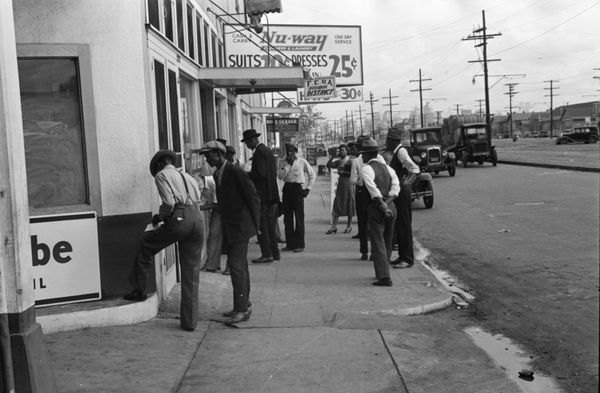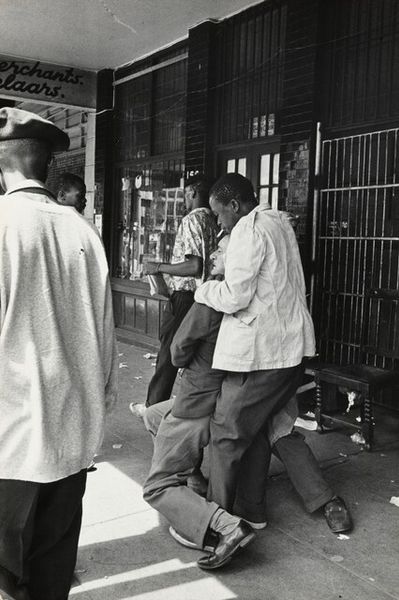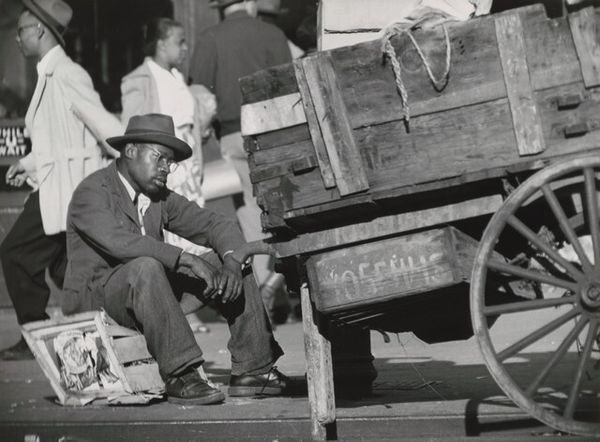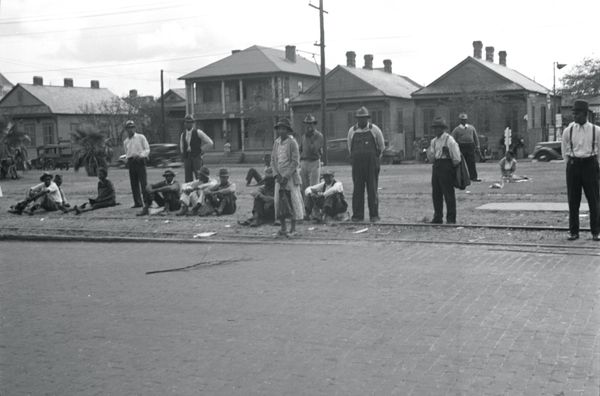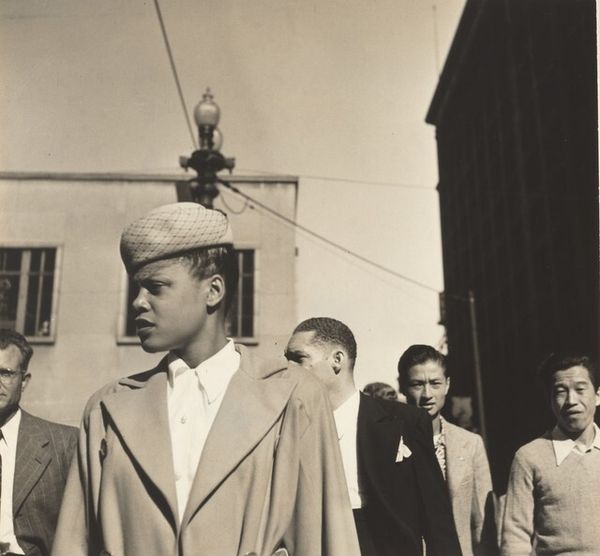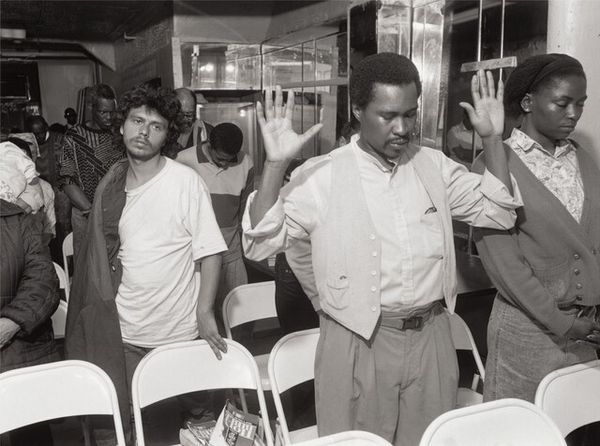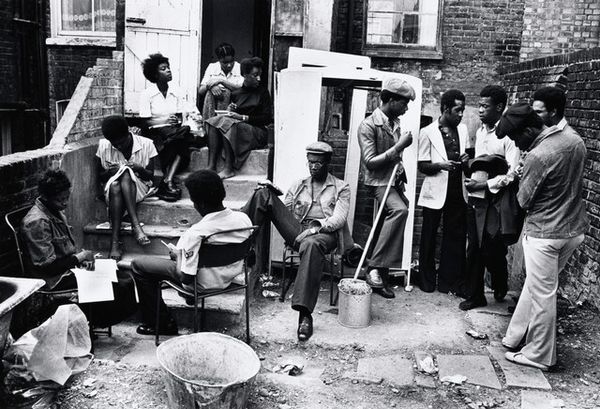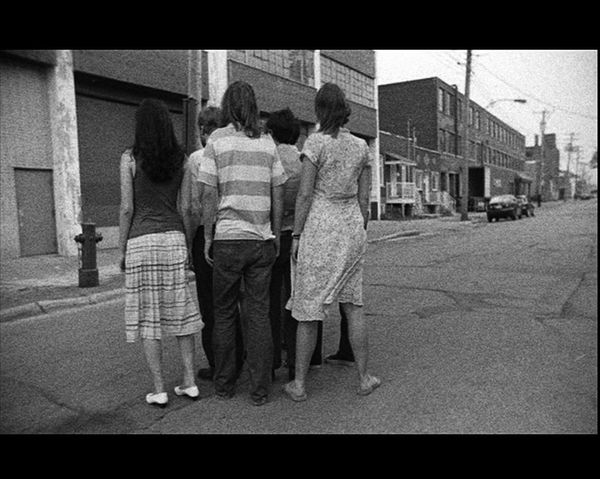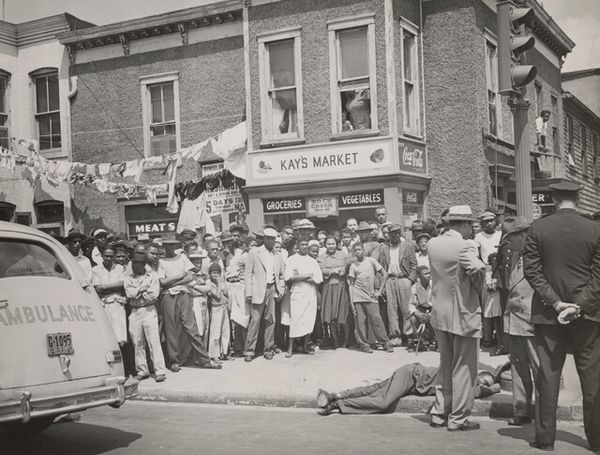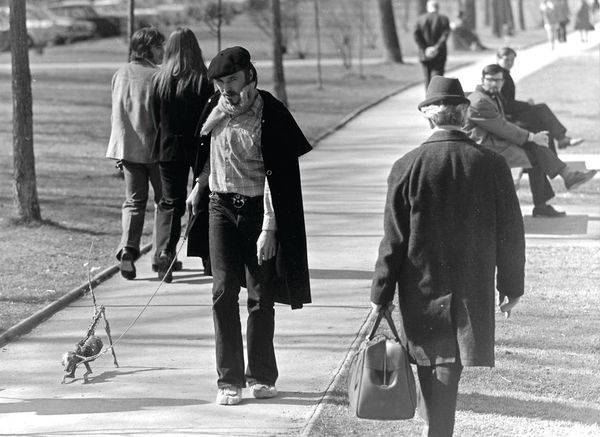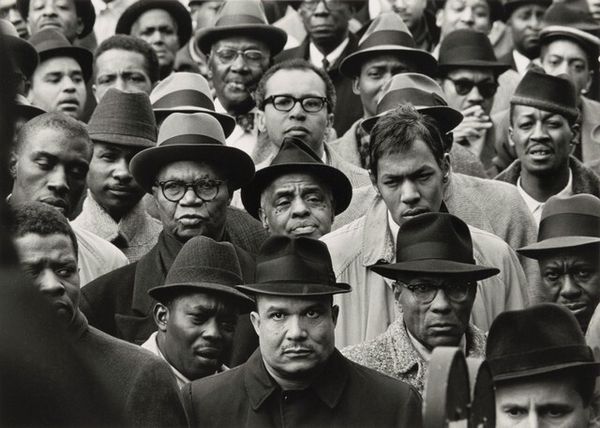
photography
#
portrait
#
black and white photography
#
social-realism
#
street-photography
#
photography
#
monochrome photography
#
street photography
#
street life
#
genre-painting
#
realism
Copyright: Ben Shahn,Fair Use
Curator: Ben Shahn’s 1935 photograph, "Applicants waiting for jobs in front of FERA offices," is rendered in stark monochrome. What’s your first impression? Editor: Stark is the word, yes. There's a palpable sense of expectation but also... anxiety etched onto their faces. The black and white, for me, just amplifies the desperation. It’s as though all color has been leeched out of their lives. Curator: Precisely. Consider how the limited tonal range emphasizes form. The composition leads our eye systematically, doesn’t it? From the foreground figure with his hand raised in thought to the queue stretching into the implied vanishing point along the street. And those hats! Editor: Yes, the hats… standardization of attire to project a respectable image? Hats purchased, perhaps, on credit, to signal their readiness and worth for the very labor denied to them? Notice how the hat shop signs punctuate the scene—capitalist aspirations looming over their precarity. Curator: Semiotically, you're right; the hats symbolize aspiration. Beyond that, consider the photographer's formal decisions: Shahn creates a flattening effect with limited depth of field, concentrating our focus. The power lines recede to the right of the frame and add subtle graphical elements that underscore urban space. Editor: But it's not just graphical. For me, the urban space speaks directly to the FERA's very literal project. Think about the logistics of its construction. How many photographers like Shahn were hired and how many applicants did they process and filter out of these spaces on any given day? The agency was selling more than just employment opportunities. Curator: I would agree that FERA’s agenda is relevant here. However, I maintain that we must appreciate Shahn's technical execution as it relates to subject and space. It has its own kind of poignancy—note, for instance, the angle and placement of that FERA jobs advertisement next to this small group. Editor: Sure, and there's undeniable power in the starkness of the black-and-white and their quiet postures outside that jobs ad, which itself represents the bureaucratized hope offered at the time. Curator: This has made me more keenly aware of how formal choices deepen the underlying tension in this photo. Editor: Indeed. I hadn't noticed how those signs actually add to a larger narrative of commodity versus real value. It’s so haunting when considered as a symbol of work lost to forces larger than the individual, wouldn’t you agree?
Comments
No comments
Be the first to comment and join the conversation on the ultimate creative platform.
